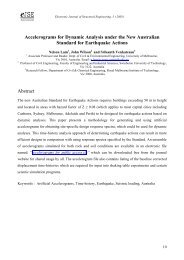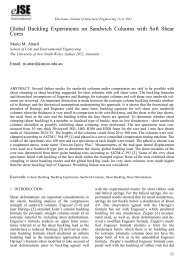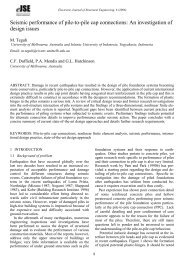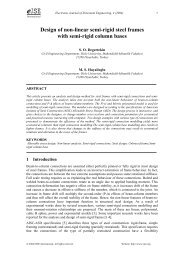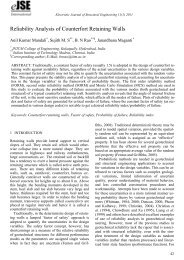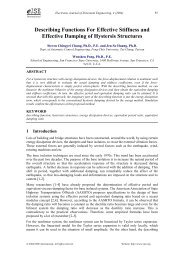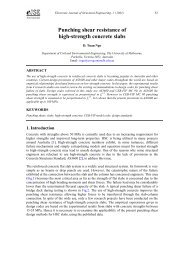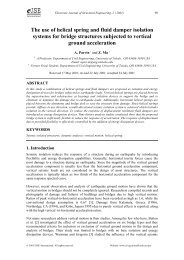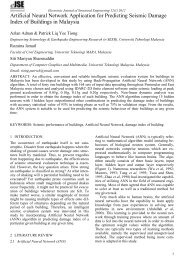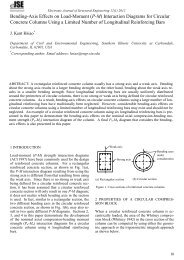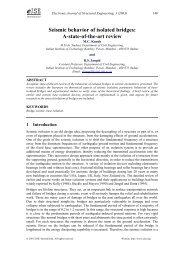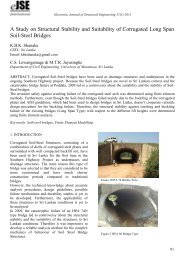Create successful ePaper yourself
Turn your PDF publications into a flip-book with our unique Google optimized e-Paper software.
Note: The damping ratios must be between 0 and 1. A value of 5% of critical<br />
damping should be entered as 0.05, not 5.<br />
• The Show Single Demand Spectrum (Variable Damping) check box is checked indicating<br />
that the single demand spectrum is shown on the plot. The color box adjacent to the<br />
Show Family of Demand Spectra check box is yellow (by default) indicating that the<br />
single demand spectrum is shown in yellow. You can change the color by clicking on the<br />
color box.<br />
Note: The single demand spectrum (variable damping) curve is constructed by doing<br />
the following for each point on the ADRS pushover curve:<br />
1. Draw a radial line<br />
through the point<br />
on the ADRS<br />
pushover curve.<br />
This is a line of<br />
constant period.<br />
2. Calculate the<br />
damping<br />
associated with the<br />
point on the curve<br />
based on the area<br />
under the curve up<br />
to that point.<br />
Sa<br />
Sd<br />
Radial line has constant period<br />
Point on single demand spectrum<br />
(variable damping) associated with<br />
arbitrary point on pushover curve<br />
Pushover curve<br />
Demand spectrum plotted at same<br />
damping level as associated with<br />
arbitrary point on pushover curve<br />
Arbitrary point on pushover curve<br />
Damping based on area under pushover<br />
curve up to arbitrary point<br />
3. Construct the demand spectrum, plotting it for the same damping level as<br />
associated with the point on the pushover curve.<br />
4. The intersection point of the radial line and the associated demand<br />
spectrum represents a point on the Single Demand Spectrum (Variable<br />
Damping) curve.<br />
This method is similar to the method called Procedure B in Chapter 8 of ATC-40<br />
except it does not make the simplifying assumption that the post yield stiffness<br />
remains constant. It is essentially the method referred to as “exact” in the<br />
discussion of the method called Procedure C in Chapter 8 of ATC-40.<br />
• The Show Constant period Lines At check box is checked indicating that up to four<br />
different constant period lines are shown on the plot. The color box adjacent to the Show<br />
Constant period Lines At check box is gray (by default) indicating that the constant<br />
period lines are shown in gray. You can change the color by clicking on the color box.<br />
<strong>SAP2000</strong> <strong>Web</strong> <strong>Tutorial</strong> 1 116



